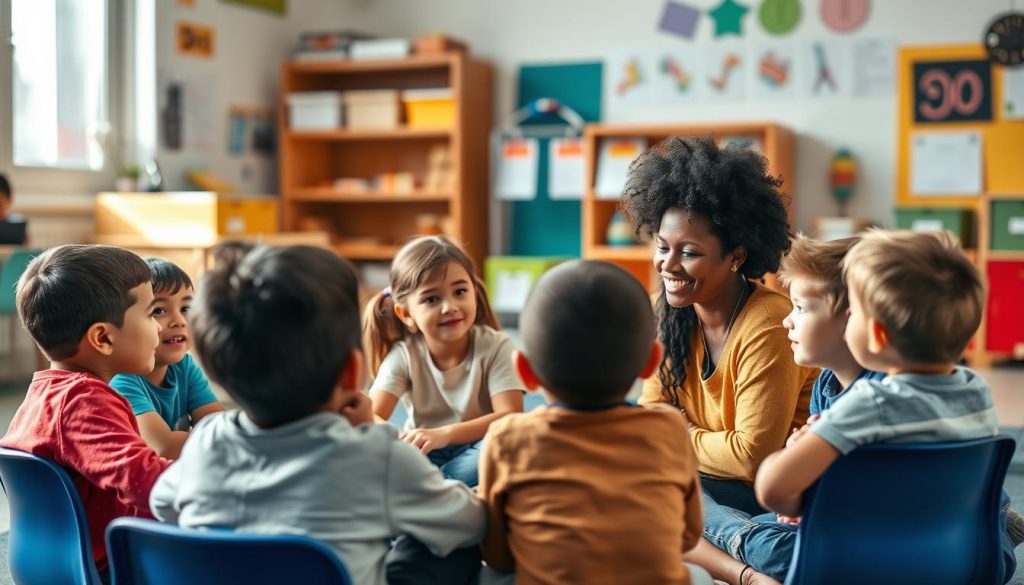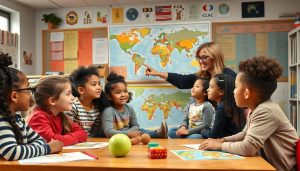Why Building Relationships Should Be Your Teaching Priority
The research is clear: students learn better from teachers they trust and respect. A study published in the Journal of Early Childhood Teacher Education found that positive teacher-student relationships were strongly correlated with higher academic achievement and improved social-emotional development. When students feel connected to their teachers, they’re more willing to take risks, participate actively, and persist through challenges.
Developing teacher skills in relationship-building isn’t just about being friendly—it’s about creating a psychological safety net that allows students to engage fully with learning. These connections form the foundation upon which all other teaching strategies can effectively build.
Consider these compelling reasons why building relationships should be your priority:
- Students who feel connected to their teachers are more likely to attend school regularly
- Positive relationships reduce behavioral issues and classroom management challenges
- Strong connections help teachers identify and address learning needs more effectively
- Relationship-centered classrooms report higher levels of student engagement
- Students are more receptive to feedback from teachers they trust
As veteran teacher Maria Gonzalez puts it, “I’ve learned that no curriculum, no technology, no teaching method matters if students don’t believe you care about them first. Building relationships isn’t separate from teaching—it is teaching.”
The good news is that relationship-building is a set of teacher skills that can be learned and refined. It doesn’t require special talent or personality traits—just intentional practices and genuine care. At Credits for Teachers, educators can find resources specifically designed to strengthen these crucial connections.
The Brain Science Behind Building Relationships
Understanding the neuroscience behind human connections can transform how we approach teaching. When students experience positive relationships with teachers, their brains release oxytocin—often called the “bonding hormone”—which creates feelings of trust and connection. Simultaneously, dopamine, the “reward” neurotransmitter, increases motivation and attention.
Conversely, when students feel threatened, judged, or disconnected, their brains produce cortisol, triggering the fight-or-flight response that inhibits higher-order thinking. This biological reaction explains why students struggling with teacher relationships often have difficulty engaging with academic content.
Dr. Patricia Kuhl, a leading researcher in early learning, explains that “the social brain determines what we learn and how we learn it.” Her research demonstrates that learning happens most effectively in contexts of positive social interaction. This neurological perspective reinforces why building relationships is among the most important teacher skills to develop.
The implications for classroom practice are significant:
“When we understand that the brain prioritizes safety and connection before content, we realize that relationship-building isn’t just a nice teaching strategy—it’s a biological necessity for learning.”
Developing teacher skills that leverage this brain science can dramatically improve learning outcomes. Simple practices like greeting students by name, showing genuine interest in their lives, and creating emotionally safe classroom environments directly impact brain chemistry in ways that enhance learning capacity.
Practical Strategies for Building Relationships in Your Classroom
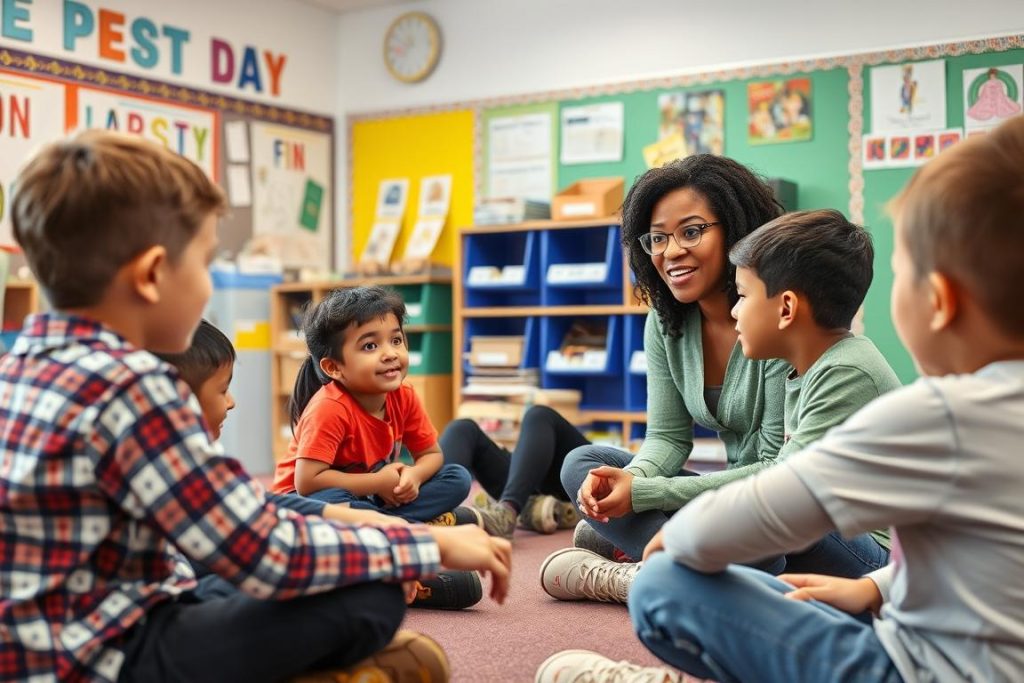
Building relationships doesn’t happen by accident—it requires intentional strategies and consistent practice. Here are proven approaches that successful educators use to connect with their students:
1. Start with Personal Connections
The first weeks of school are crucial for establishing relationships. Consider these approaches:
- Conduct interest surveys to learn about students’ hobbies, strengths, and challenges
- Share appropriate personal stories that help students see you as a real person
- Implement morning meetings or check-ins that create space for personal sharing
- Learn and correctly pronounce every student’s name
- Stand at the door and personally greet each student daily
2. Practice Active Listening
Few teacher skills are as powerful as genuine listening. When students feel heard, trust develops naturally:
- Make eye contact and use affirming body language
- Ask follow-up questions that demonstrate you’re truly listening
- Avoid interrupting or rushing student responses
- Validate emotions even when addressing behavioral issues
- Create opportunities for students to share their perspectives on classroom matters
3. Show Authentic Care
Students can tell the difference between performative interest and genuine care:
- Attend extracurricular events when possible
- Remember and follow up on important events in students’ lives
- Notice when students seem different than usual and check in privately
- Celebrate progress and effort, not just achievement
- Send positive notes home that highlight specific strengths
These relationship-building strategies don’t require extensive time or resources, but they do demand consistency and authenticity. As you develop these teacher skills, you’ll find that many classroom management issues diminish naturally, and student engagement increases.
For a comprehensive guide to implementing these strategies in your specific grade level, explore the Building Relationships with Students resource, which provides grade-specific activities and approaches.
Building Relationships with Challenging Students
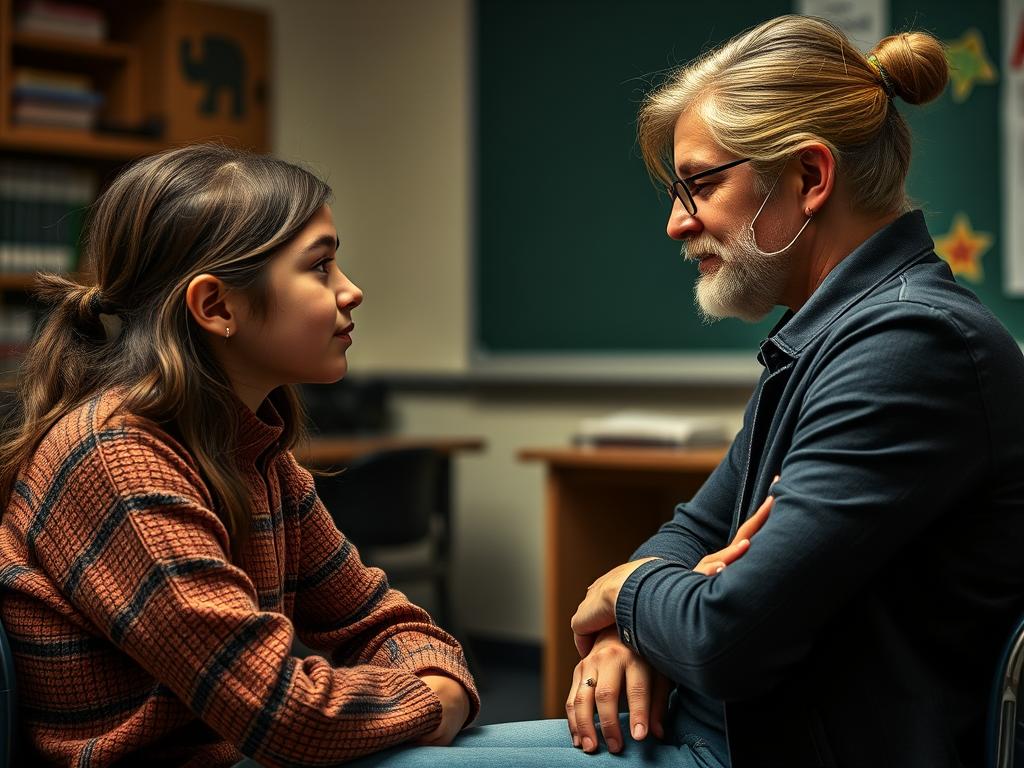
Often, the students who most need positive relationships are the ones who make relationship-building most difficult. These students may have experienced relationship trauma, face challenges at home, or have developed defensive behaviors that keep adults at a distance. Yet these are precisely the students who can benefit most from a teacher’s persistent efforts to connect.
Developing teacher skills specifically for connecting with challenging students requires patience, consistency, and resilience. Here are strategies that experienced educators recommend:
The 2×10 Strategy
This simple but powerful approach involves spending 2 minutes per day for 10 consecutive days talking with a challenging student about anything except academics or behavior. This consistent positive attention often transforms the relationship and subsequent classroom behavior.
Strength Spotting
Deliberately look for and name the strengths you see in challenging students. Everyone has strengths, and acknowledging them—especially for students who rarely receive positive feedback—can be transformative.
Repair After Rupture
When conflicts occur (and they will), model how to repair relationships. A simple “I notice things got tense between us earlier. I value our relationship and want to make sure we’re okay” teaches important social skills while rebuilding connection.
Unconditional Positive Regard
Separate the student from their behavior by consistently communicating that while certain behaviors are unacceptable, your care for them as a person never wavers.
Building relationships with challenging students tests our teacher skills and patience, but the potential impact is immeasurable. As educator Rita Pierson famously said in her TED Talk, “Every child deserves a champion—an adult who will never give up on them, who understands the power of connection and insists that they become the best that they can possibly be.”
Remember: The students who challenge us the most are often carrying the heaviest emotional burdens. Your consistent efforts to connect may be the most important educational intervention they receive.
For more specific strategies on connecting with challenging students, Credits for Teachers offers professional development resources specifically designed to help educators navigate these complex relationships.
Cultural Competence in Building Relationships
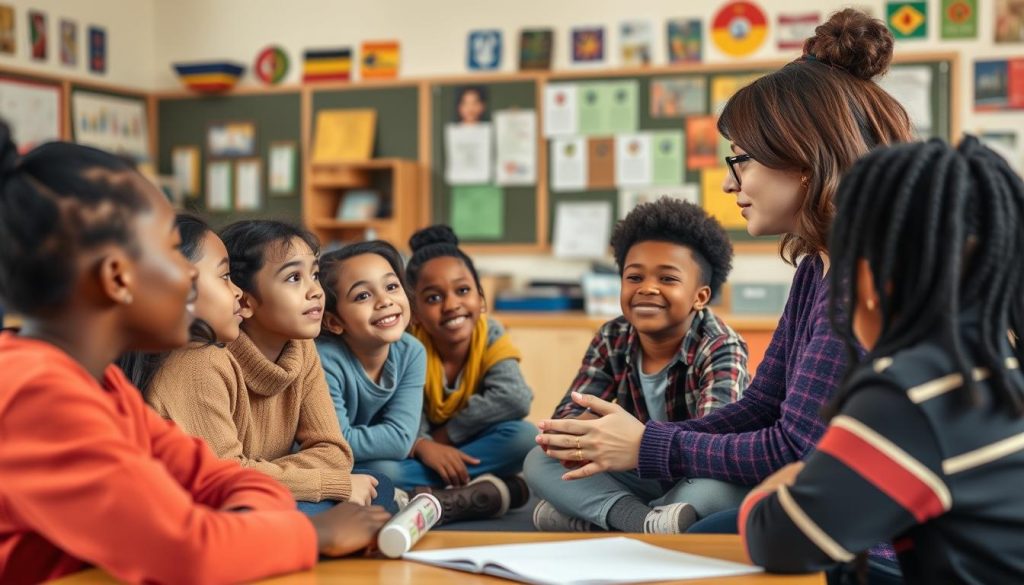
In today’s diverse classrooms, building relationships requires cultural competence—the ability to understand, appreciate, and interact effectively with students from various cultural backgrounds. This dimension of relationship-building has become an essential teacher skill in our increasingly multicultural educational landscape.
Cultural competence in relationship-building involves:
- Recognizing your own cultural lens and potential biases
- Learning about the cultural backgrounds of your students
- Understanding how cultural differences might affect communication styles
- Adapting relationship-building approaches to honor cultural differences
- Creating a classroom environment that celebrates diversity
Dr. Gloria Ladson-Billings, known for her work on culturally relevant pedagogy, emphasizes that “the way we communicate care may be culturally influenced.” For example, in some cultures, direct eye contact is a sign of respect, while in others, it may be perceived as challenging authority. Understanding these nuances helps teachers build authentic connections across cultural differences.
Practical approaches to culturally competent relationship-building include:
Community Building
Create classroom activities that allow students to share aspects of their cultural identity in safe, affirming ways. This might include family heritage projects, multicultural literature discussions, or community celebration days.
Family Engagement
Reach out to families in culturally responsive ways, recognizing that family involvement may look different across cultures. Offer multiple communication channels and be flexible with meeting times and formats.
Developing teacher skills in cultural competence requires ongoing learning and self-reflection. As educator Zaretta Hammond notes, “Culturally responsive teaching isn’t a set of strategies; it’s a mindset that begins with authentic relationships.”
By approaching relationship-building with cultural humility and a willingness to learn, teachers create inclusive environments where all students feel valued and understood. This foundation of respect and understanding strengthens the teacher-student relationship and enhances learning for everyone.
Measuring the Impact of Building Relationships

How do we know if our relationship-building efforts are working? While the impact of strong teacher-student relationships can be felt intuitively, there are also concrete ways to measure their effectiveness. Tracking these indicators helps refine your teacher skills and provides evidence of the value of relationship-building.
Consider monitoring these indicators:
Quantitative Measures
- Attendance rates
- Behavioral referrals
- Participation levels
- Assignment completion
- Academic growth
Qualitative Measures
- Student surveys about classroom climate
- Self-reflection journals
- Peer observations focused on student-teacher interactions
- Parent feedback
- Student willingness to seek help
A longitudinal study published in the Journal of Education for Students Placed at Risk found that students who reported strong relationships with teachers showed 31% higher academic engagement than those who didn’t. This translated to measurable improvements in test scores and graduation rates.
Beyond academic metrics, the impact of relationship-building extends to social-emotional development. Students with positive teacher relationships demonstrate greater resilience, stronger peer relationships, and better self-regulation skills—all critical for long-term success.
To systematically assess your relationship-building effectiveness, consider implementing these practices:
- Regular check-in surveys that ask students about their sense of belonging and connection
- Reflection protocols that help you track your interactions with each student
- Video recording of your teaching for self-assessment of relationship-building behaviors
- Peer coaching focused specifically on teacher-student interactions
Remember that relationship-building is both an art and a science. While metrics provide valuable feedback, they don’t capture the full impact of the connections you create. Some of the most profound effects may only become apparent years later, when former students reflect on the teachers who made a difference in their lives.
Conclusion: The Lasting Impact of Teacher-Student Relationships
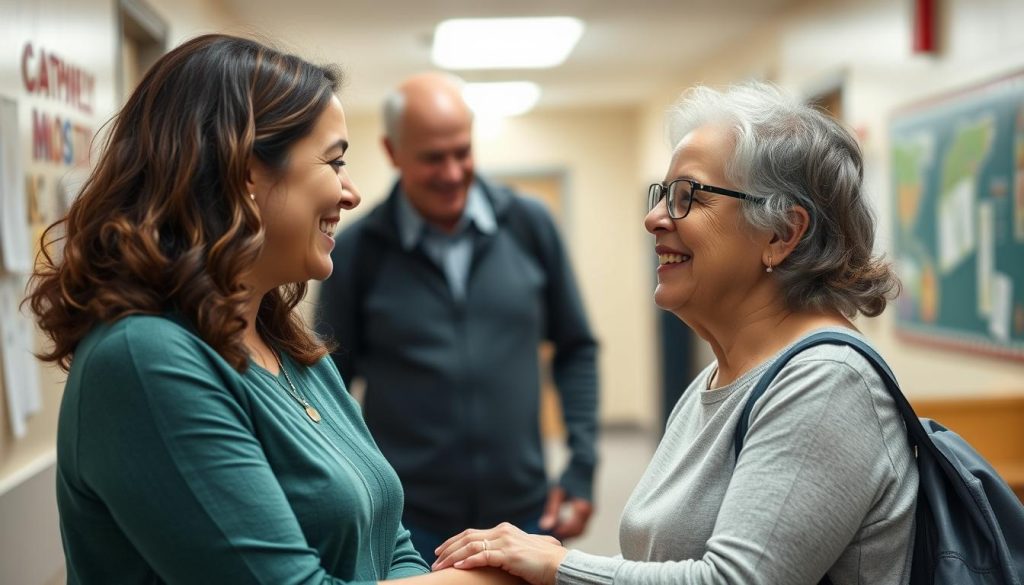
Building relationships with students isn’t just a teaching strategy—it’s the foundation upon which all effective teaching rests. When we prioritize connections, we create the conditions for authentic learning, growth, and development. The teacher skills involved in relationship-building may seem simple—listening, showing care, being consistent—but their impact is profound and far-reaching.
As you continue your journey as an educator, remember that the relationships you build today create ripples that extend far beyond your classroom. Students may forget specific lessons, but they rarely forget how a teacher made them feel. By investing in meaningful connections, you’re not just teaching content—you’re shaping lives.
The research is clear: strong teacher-student relationships correlate with improved academic outcomes, better attendance, fewer behavioral issues, and enhanced social-emotional development. But perhaps most importantly, these relationships fulfill the deeper purpose of education: to help young people discover their potential and develop into confident, capable individuals.
Ready to Transform Your Teaching Through Relationships?
Discover practical, grade-specific strategies for building meaningful connections with your students. Our comprehensive guide provides actionable techniques that fit seamlessly into your teaching day.
Remember that like any set of teacher skills, relationship-building improves with intentional practice and reflection. By making connections a priority, you’re not just becoming a better teacher—you’re creating a legacy of positive impact that extends far beyond your classroom walls.

